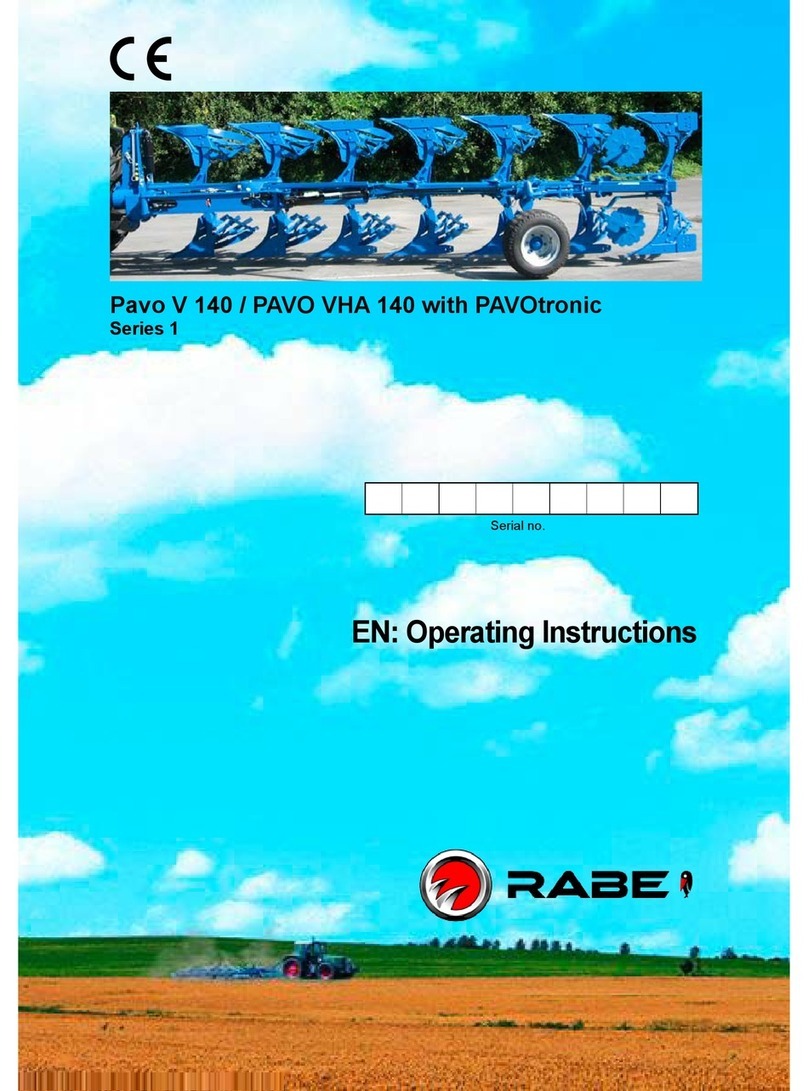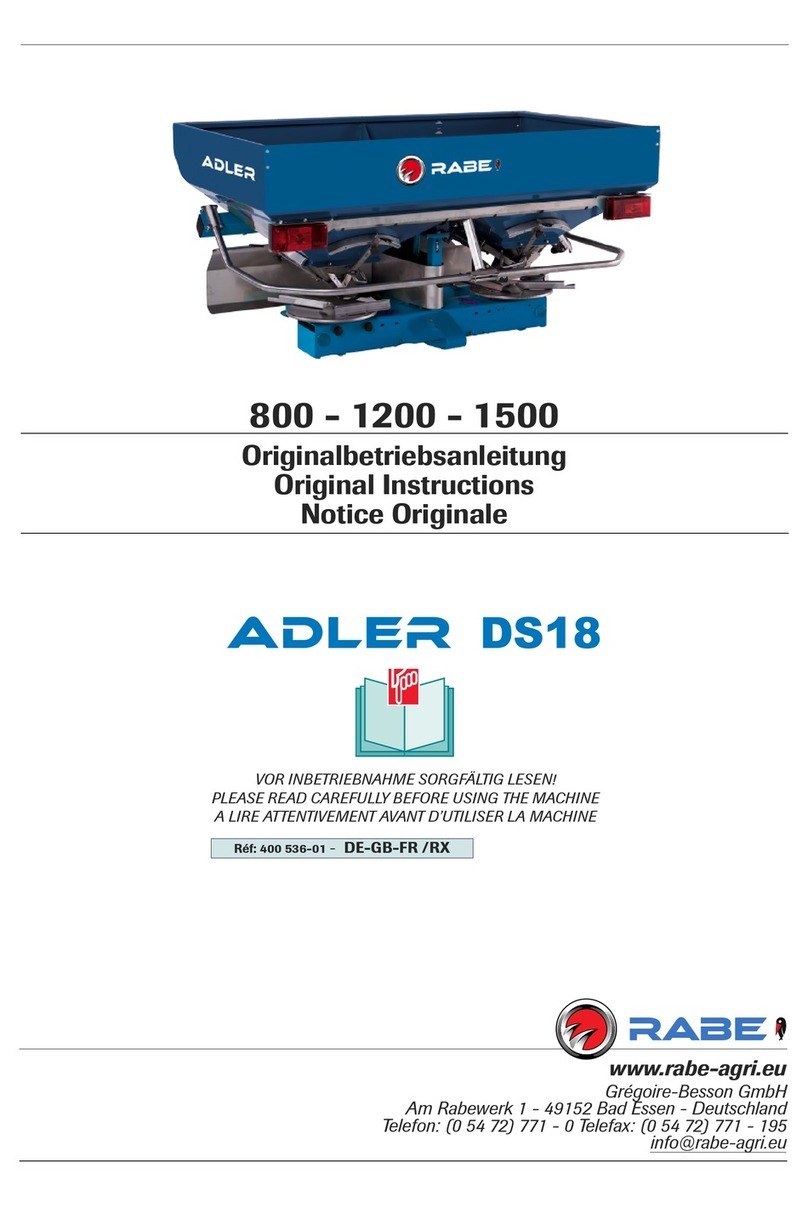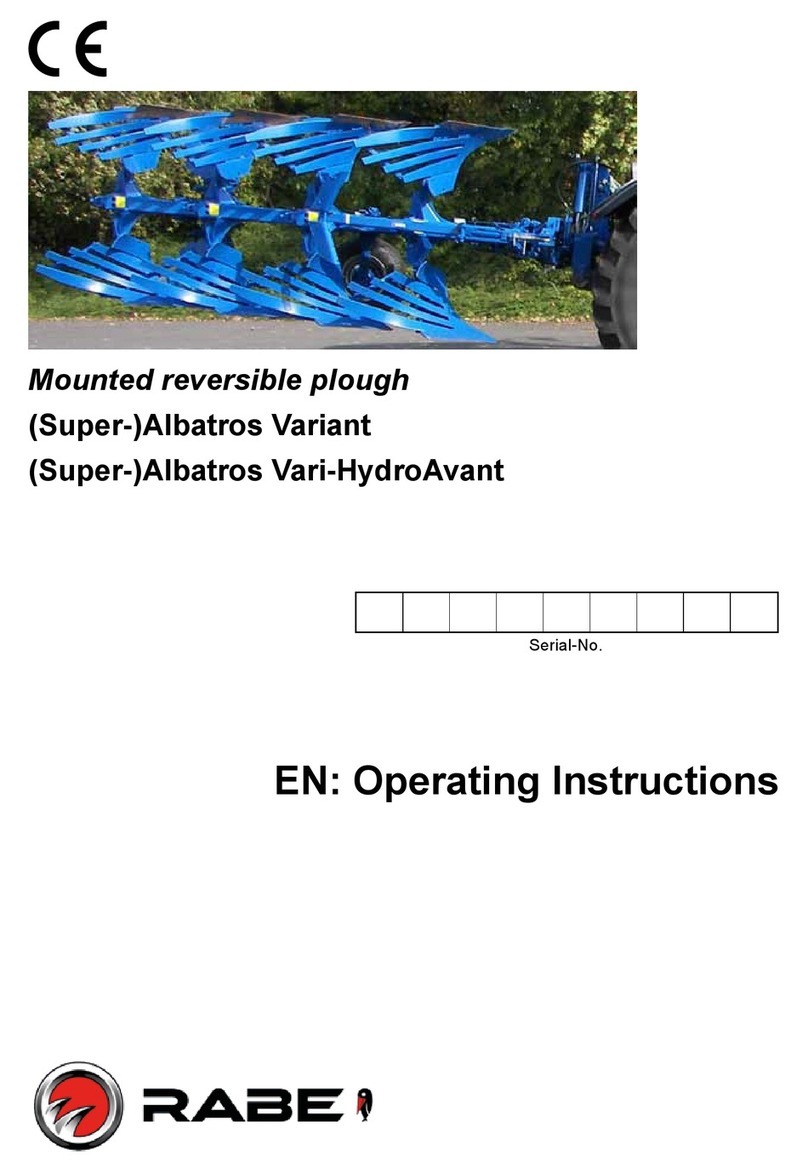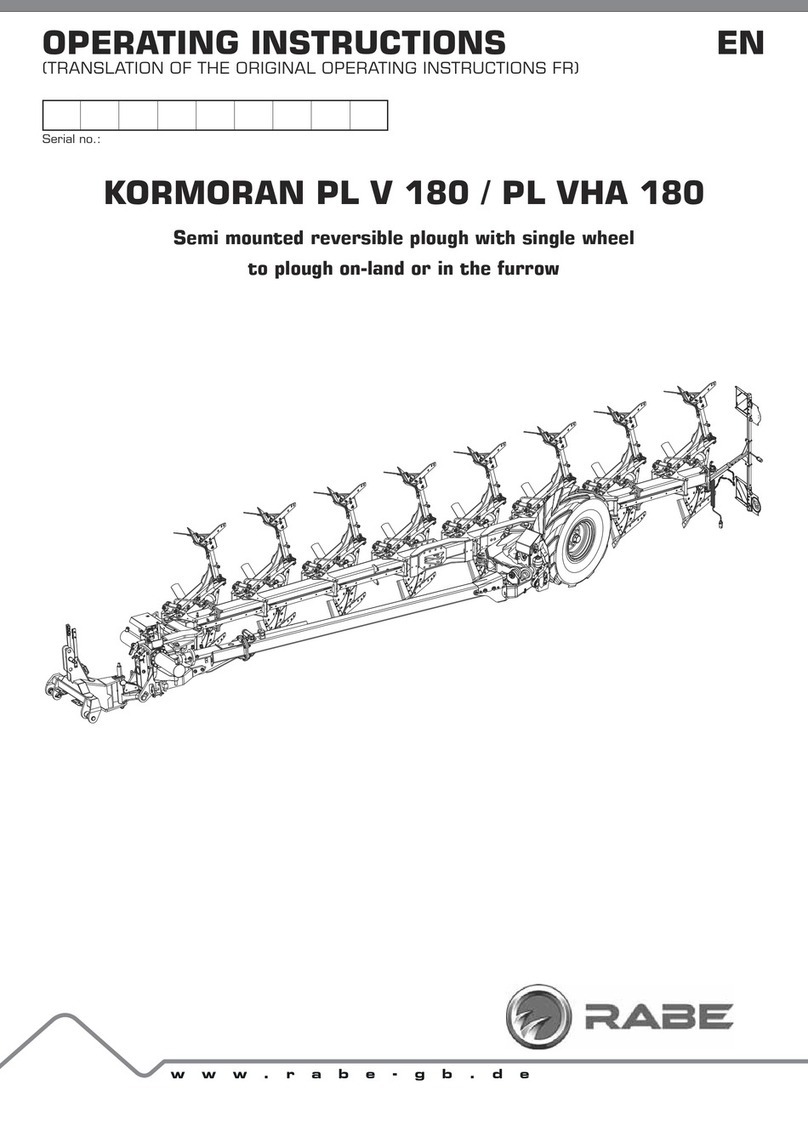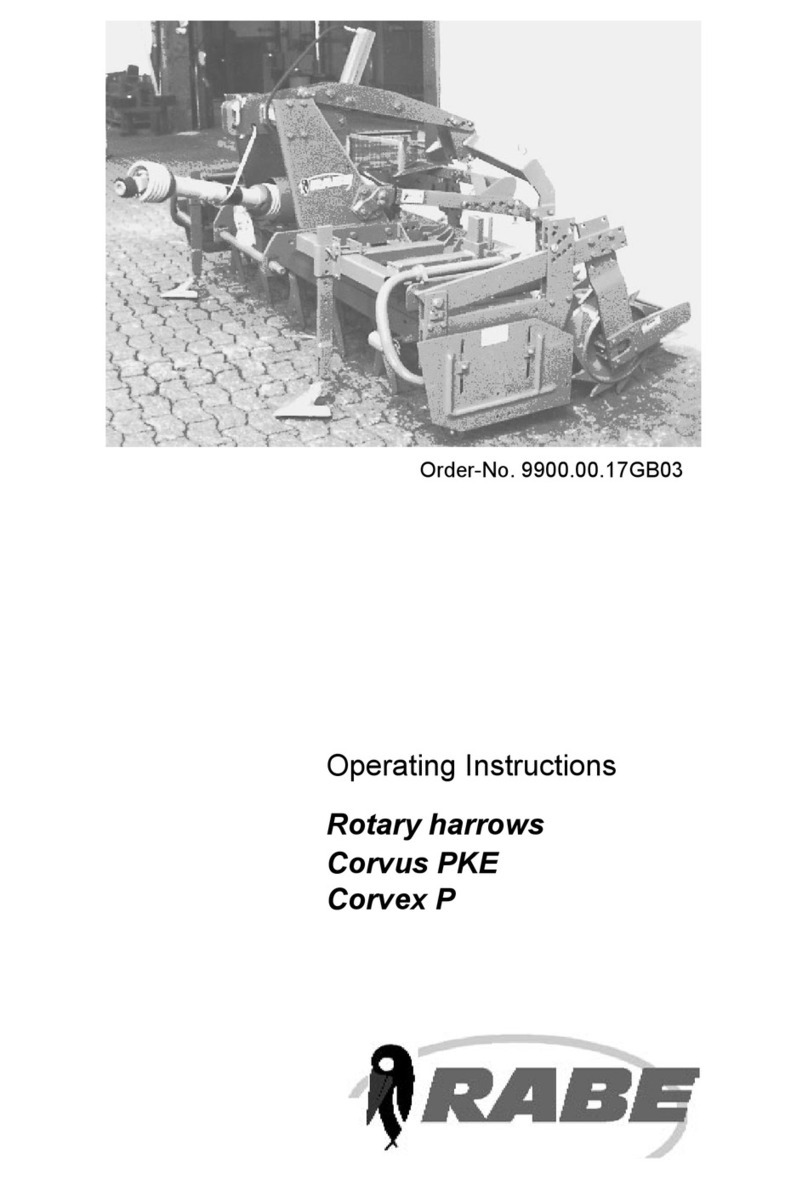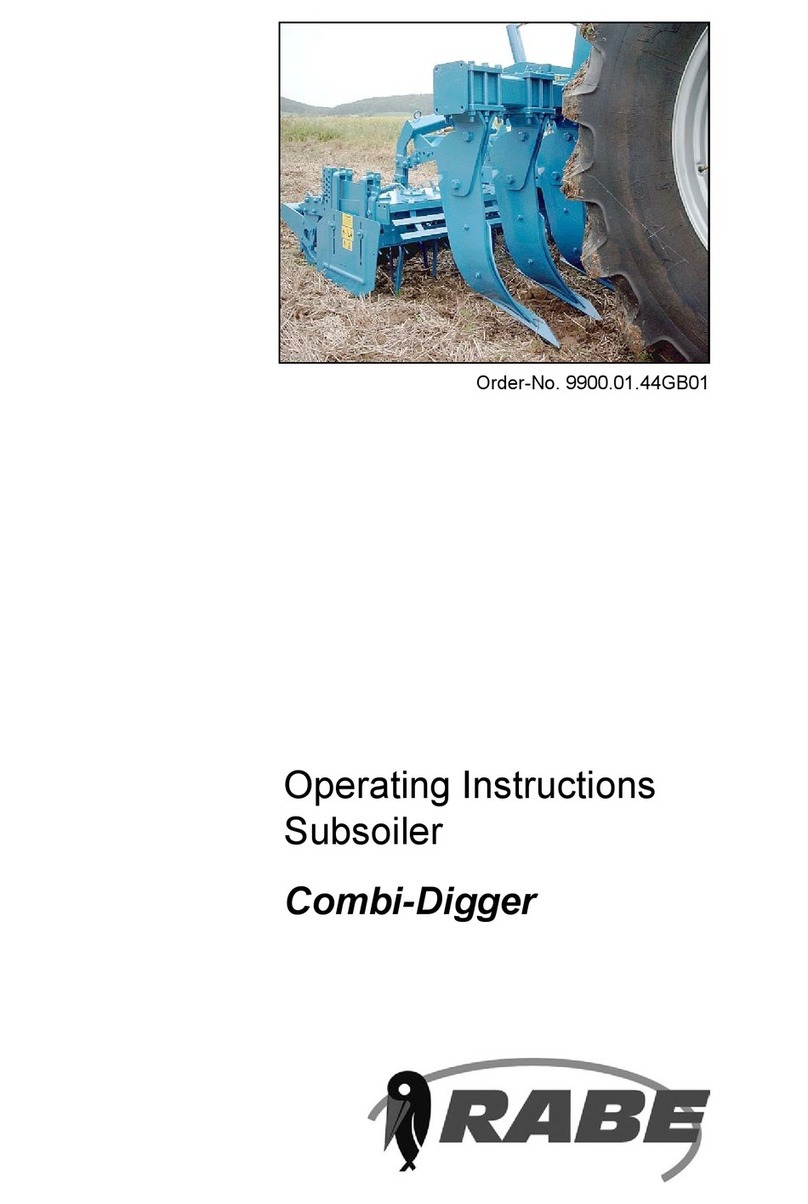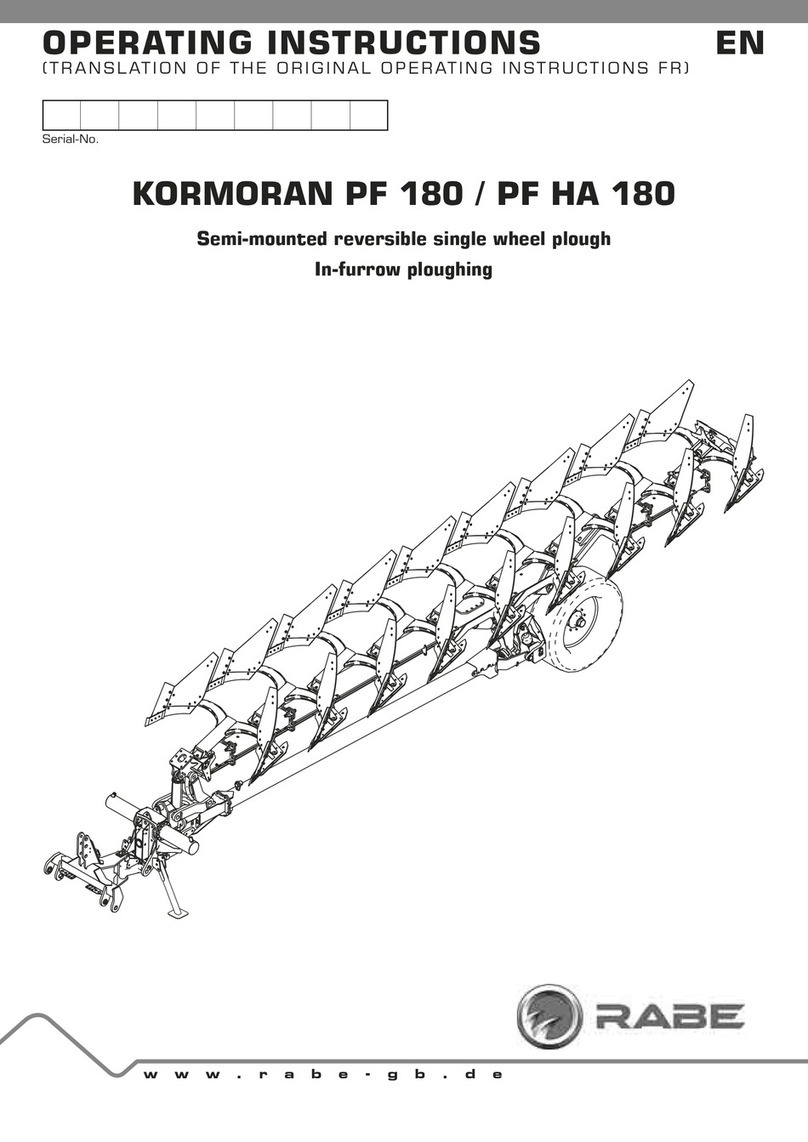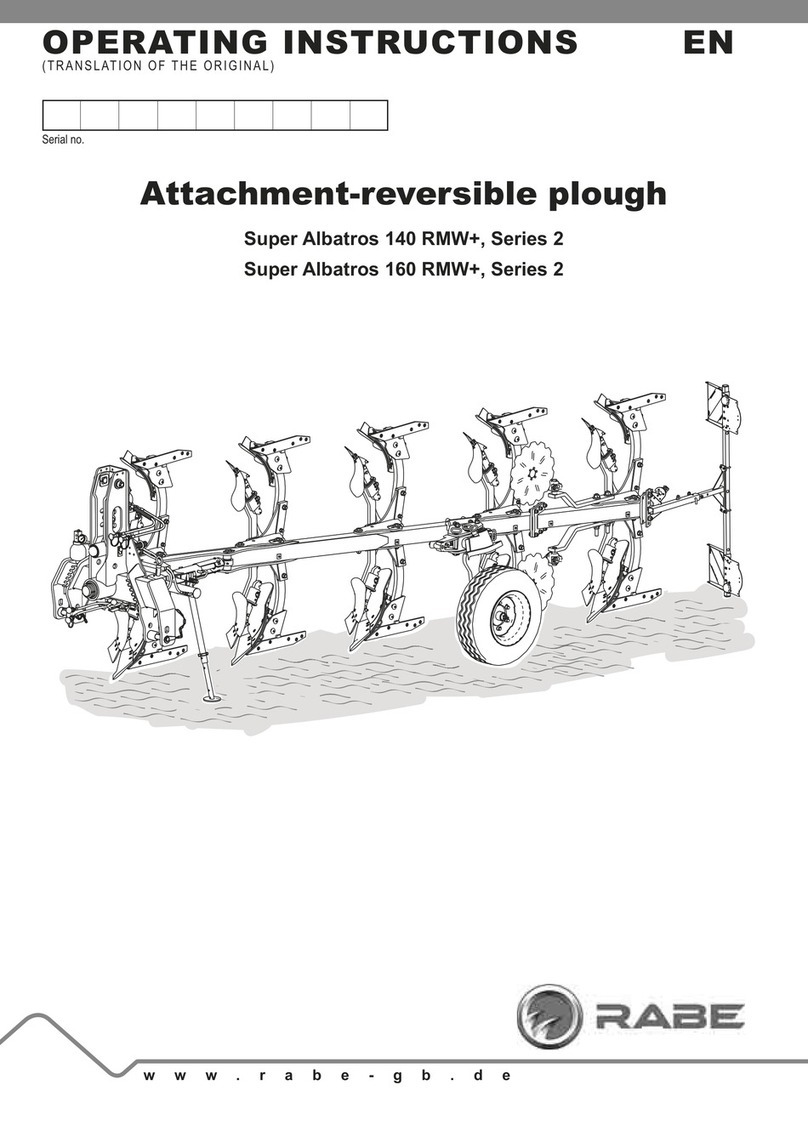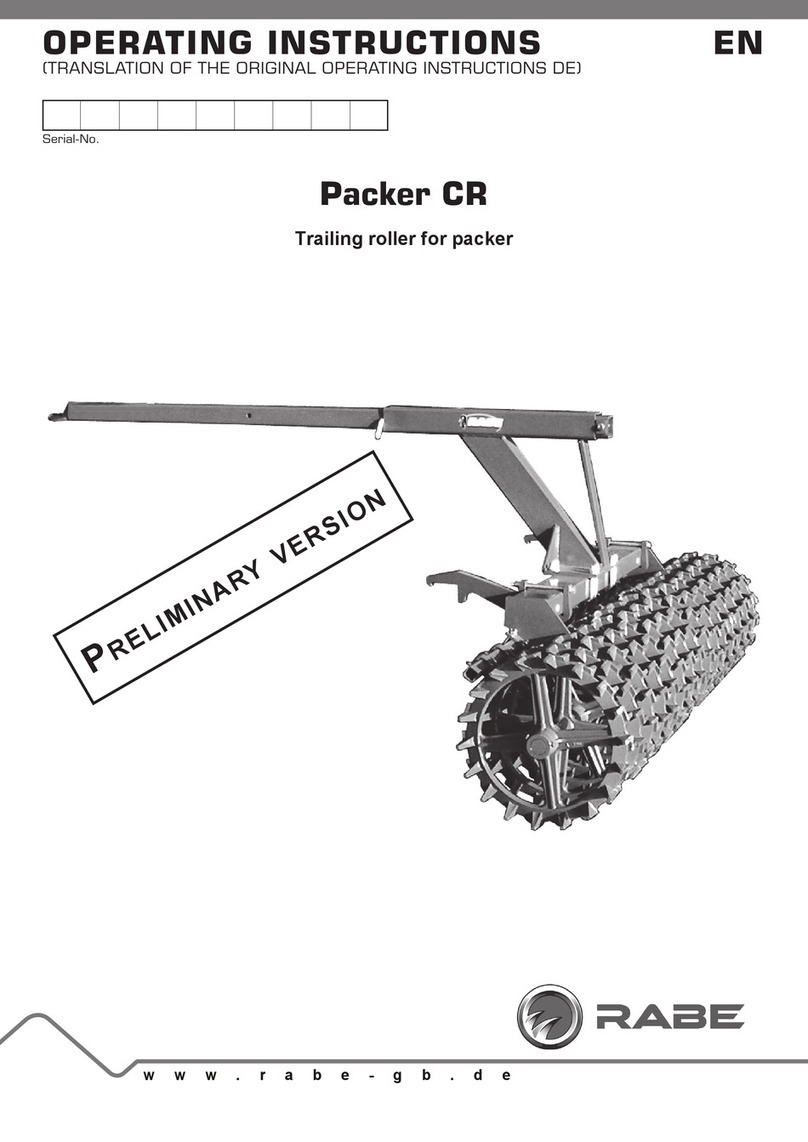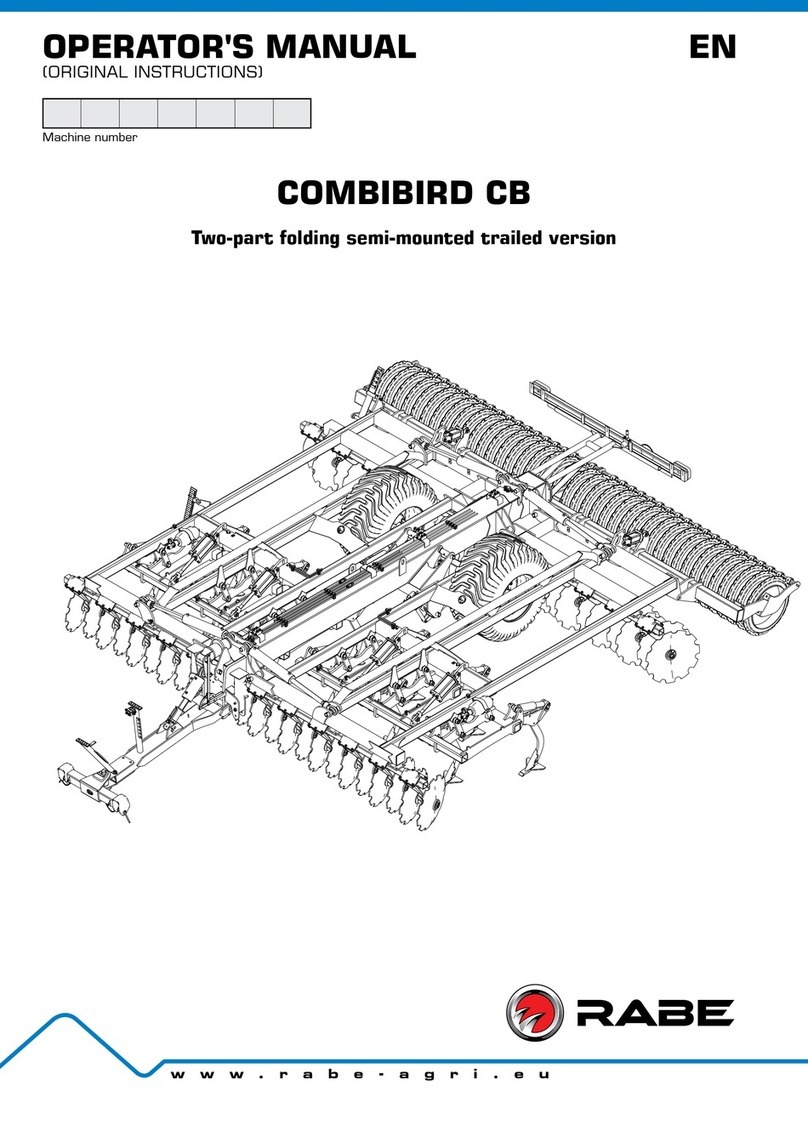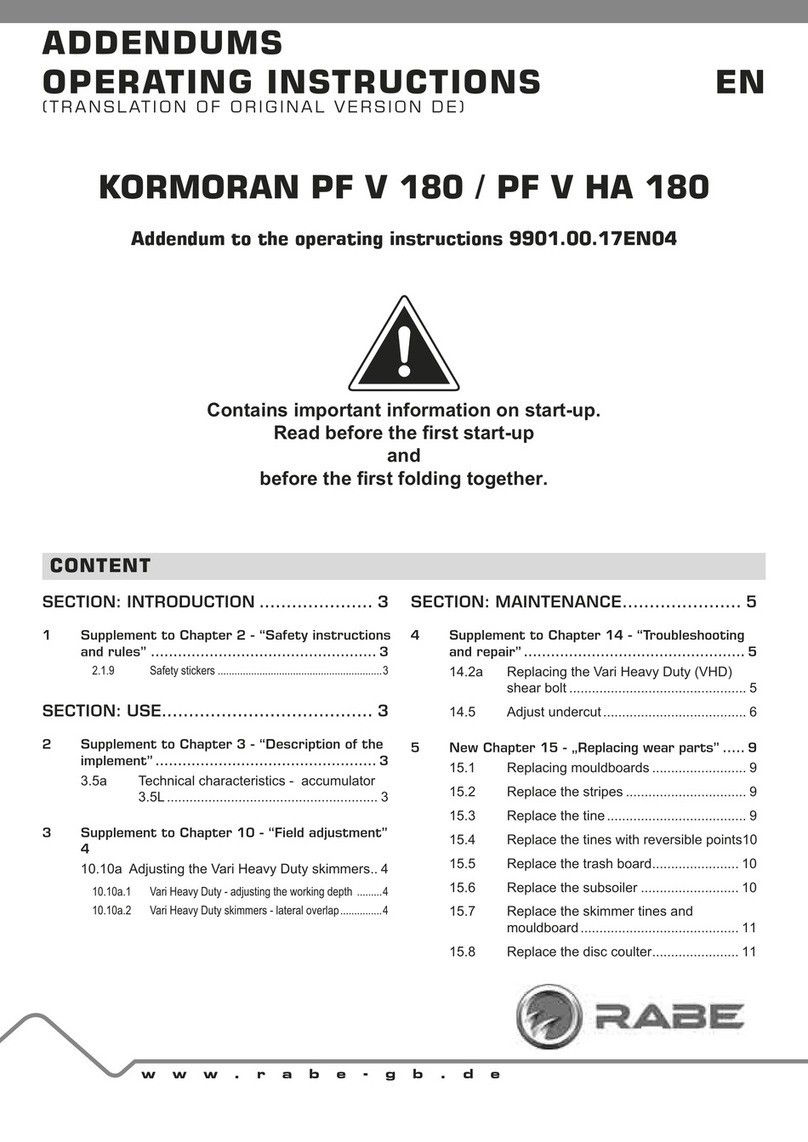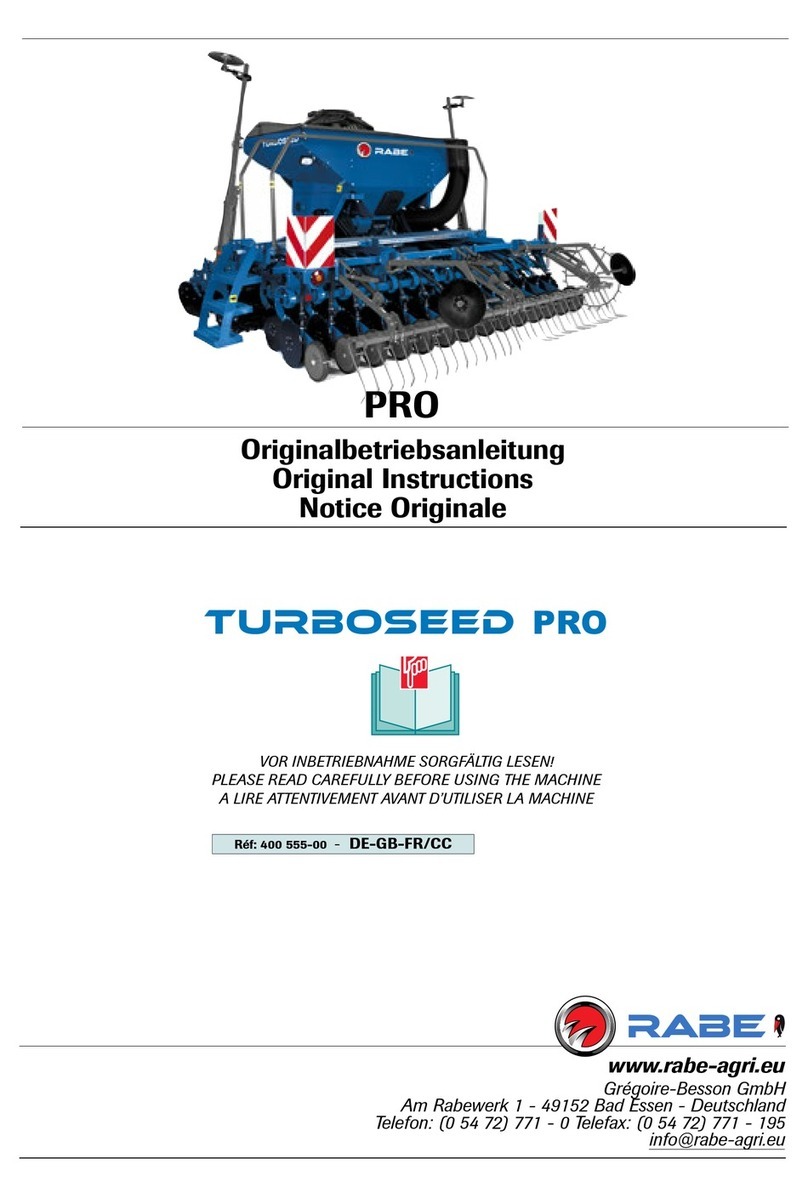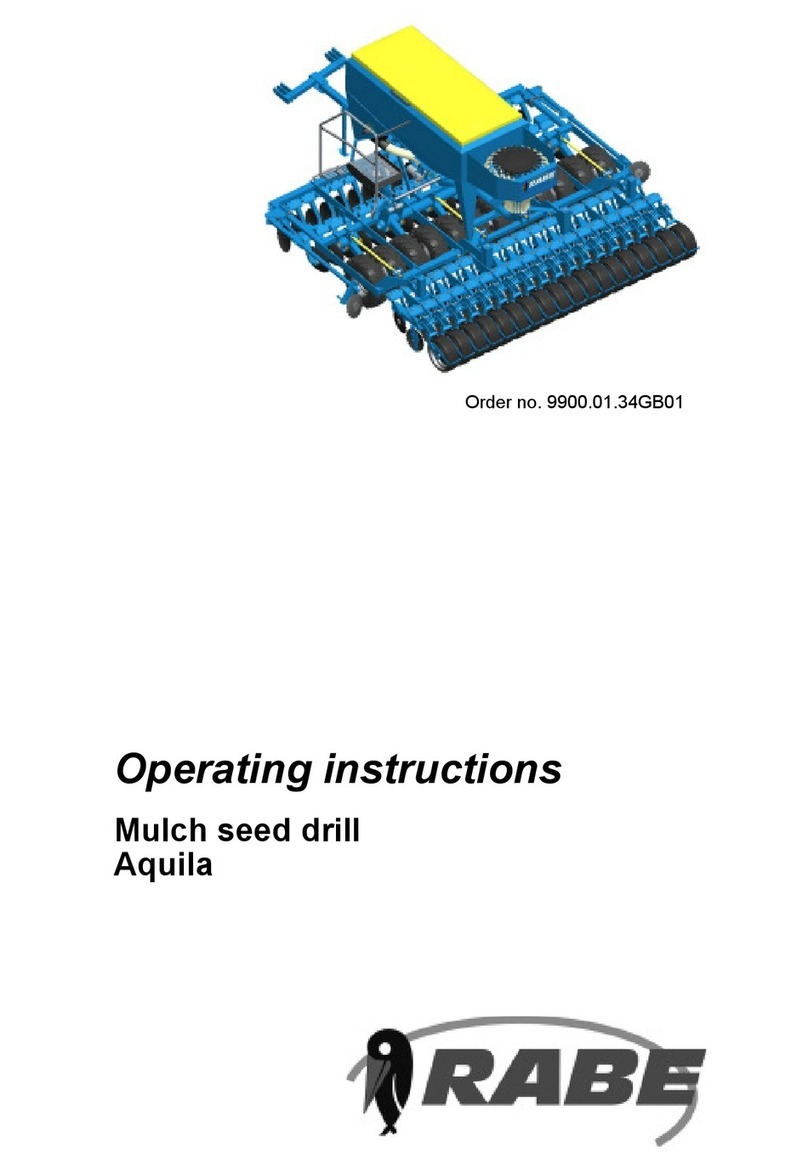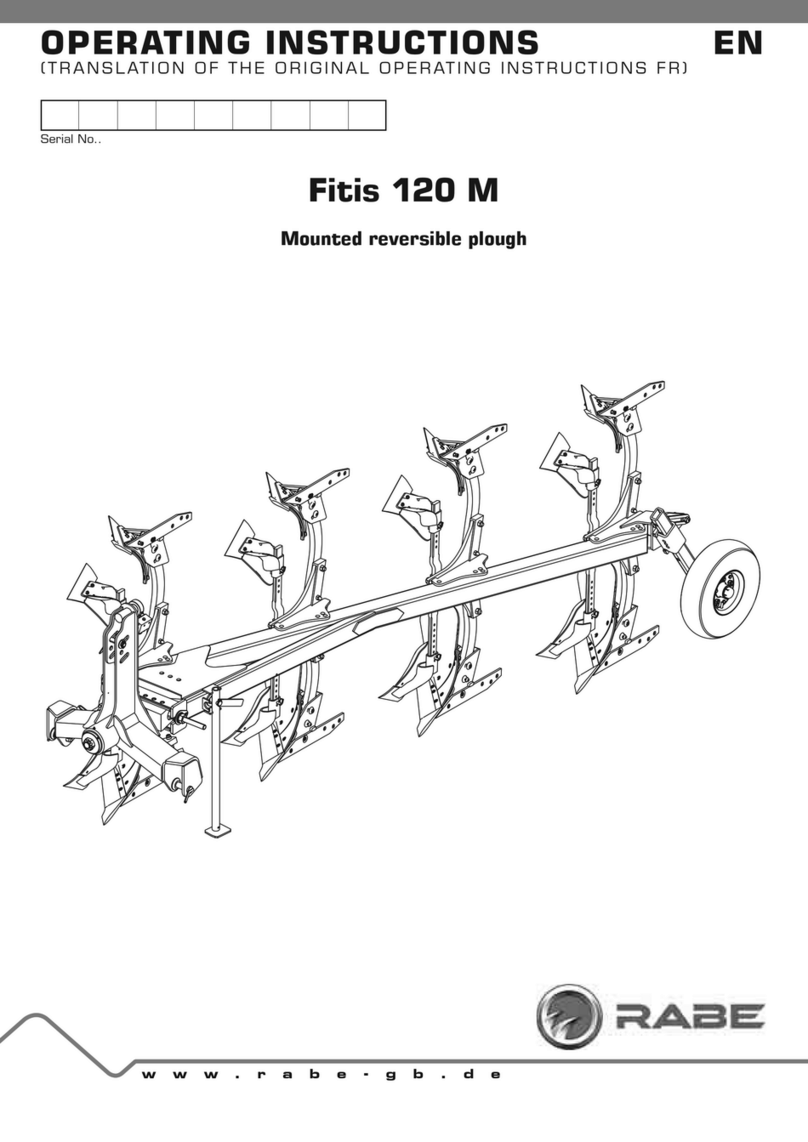
2
2. General Safety Advice and Accident Prevention Regulations
•Before starting up your implement and tractor, please check that it is roadworthy and
operatively safe.
•Please observe all generally valid safety and accident prevention regulations.
•The warnings and signs found on the implement are there to provide essential data needed to
operate the unit safely. Please observe these for your own safety.
•When using public roads always follow the relevant traffic regulations.
•Before commencing work, ensure that you are familiar with all devices and operating controls
as well as with the functions these perform. It is too late to do so once the implement is in
operation!
•Operators should wear tight-fitting clothing. Try to avoid wearing loose clothing wherever
possible!
•The machine should be kept clean to prevent the risk of fire!
•Check the immediate surroundings before driving off and putting the machine into operation!
(Beware of children!) Ensure that you have sufficient visibility!
•Riding on the equipment during work or transportation is not allowed!
•Implements should be correctly coupled and only secured to the specified appliances.
•Special care is to be taken when coupling and uncoupling implements to or from the tractor.
•When coupling and uncoupling supports, always position them correctly. (Stability)
•Always ensure that weights are only added correctly to the specified mounting points.
•Observe all permissible axle loads, total weights and transportation dimensions.
•Check and mount transportation equipment such as lighting, warning devices, and guards, if
necessary.
•Ensure that the release ropes used for rapid coupling and uncoupling hang loose and do not
automatically release when in a low position.
•Never leave the operating platform when in transit.
